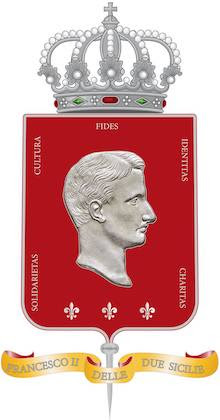Originally published at The Imaginative Conservative, this article may be of interest to our readers.On October the twenty-ninth of the year 1268, Christendom bore witness to an outrage perpetrated on the Piazza del Mercato in Naples. A beautiful and charismatic teenager, dressed in black in anticipation of his own burial, was beheaded by the executioner of Charles of Anjou, himself a prince of the Capetian Dynasty and the younger brother of King Louis IX of France. Charles had invaded Italy at the behest of the Roman Church and, as its champion, had seized the Kingdom of Sicily from the deceased emperor’s bastard son (Manfred) on the field of Benevento (1266). And now, by executing this boy, Charles believed that he had finally settled the disputed Crown of the Two Sicilies upon his brow. The judges and executioner were Charles’ men, but behind them was the pope, who allegedly urged Charles on to this act—ruthless even by the standards of the day—with fierce imprecations: Vita Conradini, mors Caroli; vita Caroli, mors Conradini! (“Conradin’s life spells your death; your life requires his death!”). The boy’s crime? He had led an army of imperial loyalists from Germany across the Alps—to Rome, where he scattered the pope and his court in flight and received an emperor’s homage from the people there—and thence southward, where he aimed at reclaiming the Kingdom that had come to him by right of inheritance. The official indictment of Conradin read out on the piazza charged him as a bandit and rebel. But the boy’s true crime—for which Pope Clement IV urged Charles to bring him to the headsman’s block—was in his blood: for Conradin was the grandson of Emperor Frederick II, Stupor Mundi, and the last representative of the Hohenstaufen dynasty, that “brood of vipers” to whose destruction the papacy had dedicated itself for the past thirty years. Continue reading
skip to main |
skip to sidebar

O God, who has placed a great light in Your saints and a provident support for Your people along the path, listen with goodness to our prayer, and glorify Your servant Maria Cristina di Savoia, in whose life as a wife and queen You have offered us a shining model of wise and courageous charity, and grant us, through her intercession, the grace [mention here the graces you are asking for] which from You, with trust, we invoke. Through Christ our Lord. Amen.

O One and Triune God, Who casts Your glance on us from Your throne of mercy, and called Francis II of Bourbon to follow You, choosing him on earth to be king, modeling his life on the very Kingship of Jesus Christ, crucified and risen, pouring into his heart sentiments of love and patience, humility and meekness, peace and pardon, and clothing him with the virtues of faith, hope and charity, hear our petition, and help us to walk in his footsteps and to live his virtues. Glorify him, we pray You, on earth as we believe him to be already glorified in Heaven, and grant that, through his prayers, we may receive the graces we need. Amen
SAVE THE DATE!
Introduction
Il Regno is not a formal membership organization. We are a circle of like-minded individuals based in Brooklyn, New York, who volunteer our time and efforts to preserve and promote our Duosiciliano (Southern Italian) heritage, culture and faith. The title of our journal is an allusion to the former Kingdom of the Two Sicilies, which was often simply referred to as il Regno, or the Kingdom. We are Catholic, Monarchist and support the Neobourbon cause. Viva Cristo Re!
Contact: ilregno2s@yahoo.com
Search Il Regno
Archives
-
▼
2025
(856)
- October (11)
- September (59)
- August (71)
- July (94)
- June (102)
- May (106)
- April (101)
- March (96)
- February (100)
- January (116)
-
►
2024
(473)
- December (73)
- November (71)
- October (32)
- September (18)
- August (21)
- July (29)
- June (34)
- May (31)
- April (42)
- March (47)
- February (34)
- January (41)
-
►
2023
(394)
- December (32)
- November (23)
- October (47)
- September (52)
- August (49)
- July (26)
- June (26)
- May (26)
- April (30)
- March (26)
- February (28)
- January (29)
-
►
2022
(245)
- December (23)
- November (21)
- October (21)
- September (22)
- August (28)
- July (17)
- June (19)
- May (18)
- April (25)
- March (14)
- February (16)
- January (21)
-
►
2021
(192)
- December (17)
- November (25)
- October (7)
- September (14)
- August (24)
- July (19)
- June (12)
- May (19)
- April (15)
- March (13)
- February (13)
- January (14)
-
►
2020
(279)
- December (21)
- November (19)
- October (33)
- September (22)
- August (37)
- July (22)
- June (24)
- May (18)
- April (22)
- March (19)
- February (21)
- January (21)
-
►
2019
(215)
- December (25)
- November (27)
- October (27)
- September (31)
- August (14)
- July (8)
- June (12)
- May (12)
- April (19)
- March (12)
- February (11)
- January (17)
-
►
2018
(260)
- December (18)
- November (16)
- October (25)
- September (33)
- August (31)
- July (22)
- June (19)
- May (15)
- April (24)
- March (27)
- February (16)
- January (14)
-
►
2017
(238)
- December (17)
- November (19)
- October (26)
- September (18)
- August (28)
- July (21)
- June (23)
- May (21)
- April (25)
- March (14)
- February (12)
- January (14)
-
►
2016
(245)
- December (24)
- November (20)
- October (27)
- September (20)
- August (23)
- July (25)
- June (24)
- May (21)
- April (15)
- March (20)
- February (13)
- January (13)
-
►
2015
(219)
- December (21)
- November (19)
- October (25)
- September (23)
- August (26)
- July (21)
- June (20)
- May (16)
- April (13)
- March (13)
- February (9)
- January (13)
-
►
2014
(121)
- December (11)
- November (9)
- October (13)
- September (18)
- August (17)
- July (9)
- June (13)
- May (8)
- April (5)
- March (7)
- February (7)
- January (4)
-
►
2013
(109)
- December (4)
- November (6)
- October (8)
- September (15)
- August (15)
- July (12)
- June (9)
- May (11)
- April (11)
- March (5)
- February (6)
- January (7)
-
►
2012
(87)
- December (12)
- November (5)
- October (8)
- September (13)
- August (10)
- July (8)
- June (6)
- May (5)
- April (6)
- March (5)
- February (4)
- January (5)
-
►
2011
(78)
- December (6)
- November (4)
- October (6)
- September (7)
- August (6)
- July (7)
- June (4)
- May (6)
- April (5)
- March (11)
- February (8)
- January (8)
Labels
Prayer for Blessed Maria Cristina, Queen of the Two Sicilies

O God, who has placed a great light in Your saints and a provident support for Your people along the path, listen with goodness to our prayer, and glorify Your servant Maria Cristina di Savoia, in whose life as a wife and queen You have offered us a shining model of wise and courageous charity, and grant us, through her intercession, the grace [mention here the graces you are asking for] which from You, with trust, we invoke. Through Christ our Lord. Amen.
Prayer for SG Francesco II, King of the Two Sicilies

O One and Triune God, Who casts Your glance on us from Your throne of mercy, and called Francis II of Bourbon to follow You, choosing him on earth to be king, modeling his life on the very Kingship of Jesus Christ, crucified and risen, pouring into his heart sentiments of love and patience, humility and meekness, peace and pardon, and clothing him with the virtues of faith, hope and charity, hear our petition, and help us to walk in his footsteps and to live his virtues. Glorify him, we pray You, on earth as we believe him to be already glorified in Heaven, and grant that, through his prayers, we may receive the graces we need. Amen
Epigraphs
We have no aspirations other than to continue to make those sacrifices, to the day we give our lives, if necessary, to defend the cause of our King. The sword that we brandished in Spain, we shall draw again to fight in favor of legitimacy wherever it becomes necessary: the revolutionaries are the same everywhere, and their plans are always iniquitous. The usurpation that has been committed to the detriment of the King of Naples cries out for deserved vengeance, and we consider it a great honor to lend a hand. ~ Francesc Tristany
Better a good death than a bad life. ~ Neapolitan proverb
The secret of the greatest fruitfulness and the greatest enjoyment of life is: to live dangerously! Build your cities under Vesuvius! ~ Friedrich Nietzsche
The blackest despair that can take hold of any society is the fear that living rightly is futile. ~ Corrado Alvaro
It's an ill bird that fouls its own nest. ~ English proverb
What is needed is not a revolution in the opposite direction, but the opposite of a revolution. ~ Joseph de Maistre
The tricolor! Tricolor indeed! They fill their mouths with these words, the rascals. What does that ugly geometric sign, that aping of the French mean, compared to our white banner with its golden lily in the middle? What hope can those clashing colors bring them? ~ Giuseppe Tomasi di Lampedusa
Blogroll
Fondazione Francesco II delle Due Sicilie
Help Support The Roman Forum
Papal Zouave International
La Famiglia Degli Apostolati
Recommendations (Italian)
Recommendations (English)
Visitors
© 2009-2025 Il Regno. All rights reserved









